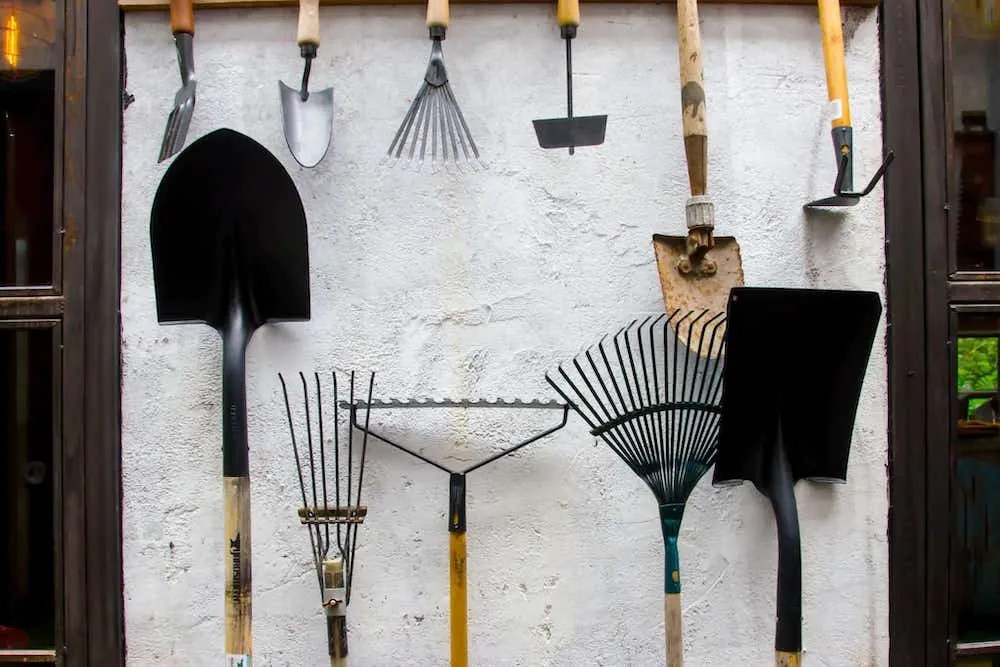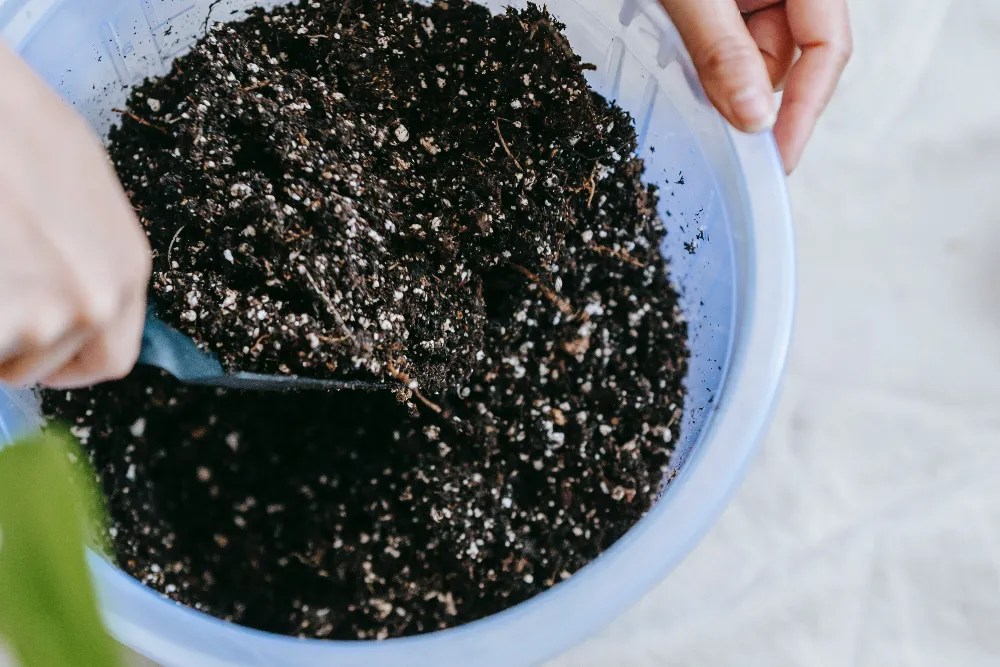Related
horticulture is a great way to reconnect with nature , develop your own food , and positively contribute to your physical and genial well - being . There ’s nothing more cheering than watch your plants grow and yield beautiful peak , tasty fruit , or crunchy veggies .
So how should you go about begin your garden ? What are the most important things to consider and the step to take ? There ’s mulch to learn below !
Step 1: Decide on the Best Gardening Location
Do you want tostart your garden indoorsor outdoors ? This will serve you narrow down where you want to keep your plant . Deciding on the best location is all important for your plant to thrive .
1. Pick Your Plants
paradigm recognition : Mikhail Nilov via Pexels
First , list plants you want to grow harmonise to your USDA zone because this will avail you realise your plant ’s soil , brightness , nutrient , and moisture want .
If you’regrowing them indoors , you ’ll necessitate tomeasure brightness level , check over wet , translate your works ’s soil andhumidity need , and possibly invest ingrow lights for goodish growing . If you ’re soaked on space , considersetting up vertical gardensor akitchen herb garden .

When growing them outside , picking the best fix is essential for your plants . When prefer a site , you ’ll need to :
2. Test Your Soil
Image credits : Queensland State Archives via Creative Commons
It ’s essential totest your soilbefore you start engraft . Doing so help you infer your soil ’s current texture , health , and birth rate levels , and you could use this information to better it . While someplants thrive in clay dirt , many prefermoist , well - draining ground .
expend different soil amendment likeperlite , vermiculite , bark , and coarse sand toimprove your soil ’s drainage , bodily structure , and keeping abilities .

Also , test your ground pHto understand if it ’s acidulent or alkaline . Depending on the plant you want to grow , you ’ll demand toadjust the soil ’s pH.
3. Consider Sunlight
Image credits : belkin59 via Creative Commons
The placement you piece for your garden , indoors or outside , should get between four and six hour of lineal sunlight , dappled sunlight , and partial and recondite shade daily . All plant take some amount of sun to thrive .
observe that not all works have the same luminosity necessity . For example , theZZ plant , Monstera deliciosa , andsnake plantrequire low to average light ( under four hours ) , whereasChinese jade , aloe vera , and Ixora works ask full Dominicus to thrive ( six hours and more ) .

But if all plants call for sunlight to grow , what worse can befall if you put a abject - spark - loving plant under full sun ? When this happen , yourplant ’s leaves may turn yellowor have crispy brown summit . Too much sunlight can cause shade - lie with plants to droop , ironical , and ultimately die .
4. Lettuce Not Compete
Image credits : PhotoAC via Pixabay
Much like humans , plants do n’t like competition . Your chosen location should n’t have mature trees , bushes , shrubs , or weed . Discard weeds like thistle , but dandelion , mugwort , purslane , clover , pennycress , mouse-ear chickweed , and lamb ’s after part can beadded to your compost genus Pilea they ’re soil - friendly .
Some weeds , like dandelions , butterfly sens , and globe thistle , have duncish taproot that fall into place late into the dirt . plant life with deep taproot can be very militant , leaving your plants with very little moisture and nutrients to absorb , leading to stunted growth or premature death .

Remove the Mary Jane naturallybefore starting your garden .
5. Location’s Water Supply
Image credit : iMarzi via Shutterstock
get going your garden next to a piss supplying for easy access . This will also prevent the annoying need to walk back and away from the hose to the faucet . An excellent path to ensure you have urine tight to your garden is to learn how toharvest rainwaterorcreate a rainwater garden . Plants love rain since it ’s natural , slightly acidulous , and soft liken to water faucet water system in some region , which can be hard .
Hard weewee bear a medium to a high amount of dissolved minerals like limestone , chalk , and calcium , whereas soft water contains a small amount . Invest in aTDS meterto test your H2O ’s hardness level . If your body of water is above 7 grain per gallon , it ’s toilsome .

Avoid irrigating your crops with laborious water supply because the high amount of atomic number 11 in hard water supply can burn your plant ’s roots and prevent them from absorbing the soil ’s nutrients . This can get stunted outgrowth and untimely plant death .
If the water in your area is hard , you’re able to invest in a water softener or awater descalerand bond it to the tap you ’ll be using to irrigate your plants . Test the TDS before and after attaching it to see the divergence , and take note it for future reference book .
6. Create a Layout Plan
picture credits : That Jen Keller via Creative Commons
When plan how big or small your garden should be , take how much prison term you have to incline to your garden , the kind of plant you want to grow , and if you’llmake your own compost . You cantry lasagna gardeningif you ’d like to garden and compost simultaneously .
You ’ll need to maintain space between each plant . Spacing is dissimilar for each industrial plant character and species . For example :

know how much space you need to maintain between each flora will help you understand how much space you have in your garden and how many plants you could grow without overwhelming yourself and your plot ! This layout plan will also facilitate withcrop rotation .
7. Containers vs. Raised vs. In-Ground Planting
Image credits : National Garden Clubs via Creative Commons
Assuming you know how much blank space you have and the form of plants you require to grow , you ’ll need to keep your climatic weather condition in thinker . When you grow your plants in the background , you ’ll need totransplant them into containerswith drain holes andmove them indoorsbefore the temperatures drop during the frigid winter .
If you grow them in container and raised beds and ca n’t move them indoors , makehoop housesandcold framesto help themsurvive the cold . If place allows , you could evenDIY a greenhouseto protect your plant from conditions , pests , and diseases .

Step 2: Purchase the Equipment and Seeds
Now , indue in some essential horticulture tool and supplies and eitherharvest seeds from your garden , inquire your friends and neighbor , or purchase them online from reputable sites .
1. Gardening Equipment
Image credits : me2724 via Shutterstock
Invest unessential gardening equipment , including a spade , rake , lachrymation can or hose , measuring pin , hoe , paw grower , pruning shears , industrial plant keep , andsoil moisture tester . Trellises , cages , and industrial plant supports will calculate on the kind of plant you ’re growing . see to it yourtools are clean and sharpbefore manipulation .
2. Gardening Supplies
ikon credits : Teona Swift via Pexels
While it ’s a good theme tomake your own plant food , usehomemade organic pesticide , make your own compost , and usefallen leave as mulch , you’re able to seat in these products online if you do n’t have the time .
3. Seeds and Plants
look-alike credit : Ken Wolter via Shutterstock
To go around the initial plant emergence phase angle , see your nearest greenhouse and buy the plants you want to arise . If you ’d rather watch the intact seminal fluid - to - works process , leverage vegetables , yield , and flowerseeds from reputable online website . Keep your USDA zone in mind before you make your purchase .
Prepare to Garden
Image credits : verchmarco via Creative Commons
Toprepare your dirt for a gardenfor inground planting , you ’ll need to :
Toprepare your dirt for containeror raised bed planting , you ’ll need to :

All that ’s leave now is to maintain your garden . To avoid under and overwatering , use a moisture quizzer to test the soil ’s moisture before you water your plants . Remember to deal with weeds andprune your plantswhen required .
Finally , remember tooverwinter your plantsby either bringing them indoors during the dusty winter orbuilding inhuman framesor basket houses to help them survive the coldness .
Lettuce be Crop-timistic!
Starting your garden can seem challenging ; however , it ’s worth the hard body of work ! Remember to start humble so you do n’t whelm yourself . Do n’t forget to refer to your USDA zona before purchasing plants and seeds for horticulture .
Leave your experience , mentation , and questions in the comment discussion section ! And apportion with friends and family who might find this helpful .
Happy horticulture !






